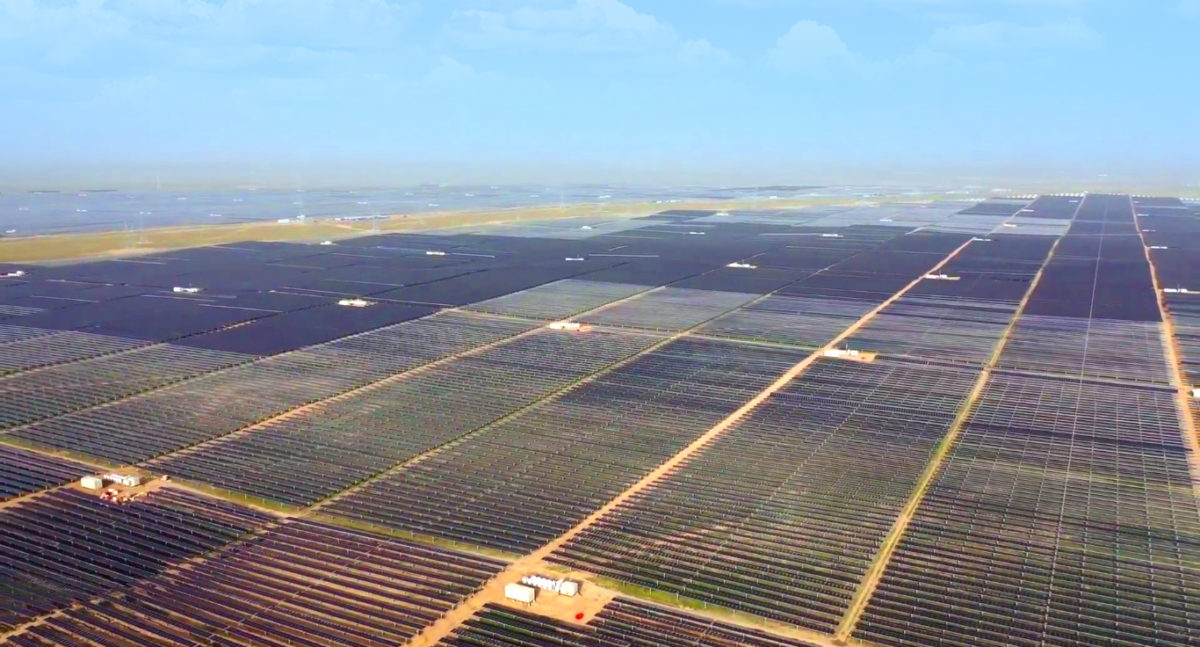China may add between 60 and 75 GW of new PV capacity this year, according to the Asia Europe Clean Energy (Solar) Advisory (AECEA), which revised upwards its outlook for this year after having predicted a newly installed PV capacity of 42 to 48 GW in November.
The expected additional growth is forecast to come from both the distributed generation and large-scale segments.
Utility-scale
Despite increasing land availability and grid integration constraints, the utility-scale business is expected to provide the largest portion of the expected growth, thanks to a 55 GW pipeline of unsubsidized solar projects that were approved by the Chinese authorities over the past two years and 8 GW of projects that participated in auctions held between 2019 and were then converted to unsubsidized schemes. These will have to reach completion by the end of the year. Furthermore, China's National Energy Administration (NEA) could launch two new auctions for large-scale solar with capacities of between 1 and 2 GW each in the upcoming weeks, while the regional governments of Yunnan and the Guangxi Autonomous Region are supporting projects with capacities of 3 GW and 1 GW, respectively.
The China-based consultant also explained that the large-scale PV business in China is moving towards hybridization with different renewable energy technologies, including wind, biomass and hydropower, and is also seeking more frequently to develop projects in the form of agrivoltaic or floating projects or linked to storage facilities. “Single standing utility-scale PV systems designed to “just' generate power might be soon no longer sufficient to receive official project approval,” AECEA stated. The NEA, on the other hand, is suggesting PV project developers design their plants to ensure that the maximum amount of the generated energy is self-consumed on-site.
Distributed solar
As for the distributed generation segment, the analyst revealed that the Chinese government could allocate enough new incentive budget to support between 10 GW and 14 GW this year. Furthermore, the governments of Beijing, Shanghai, Guangzhou and Xian have introduced their respective incentive schemes for distributed solar PV at the end of last year. “All these cities offer a feed-in-tariff (FIT) for between two and five years, except Beijing, which in addition even offers subsidies between 30 and 50% of the total investment,” the consultant revealed. “Moreover, Xian / Shaanxi Province offers RMB 1/kWh with a maximum of RMB 500,000, if PV is combined with an electrical energy storage unit.”
Qinghai has moved even further by becoming China's first province offering a FIT of RMB 0.01/kWh or RMB 0,015/kWh if batteries are locally procured and 60% of the generated power is self-consumed. These incentives are being awarded to solar-plus-storage projects that are grid-connected by the end of 2022
More ambitious targets
According to the consultant, the NEA is currently defining the new so-called “national unified renewable energy power consumption responsibility targets” for this year and the 2022-2030 period, and the amount of wind and solar capacity expected to be installed in the country by the end of the decade may be much higher than that announced by Chinese President Xi Jinping in December when he said around 1,200 GW was to be expected. “First calculations of what this might mean in terms of cumulatively installed wind/PV power generation capacities suggest between 1,600 and 1,700 GW by 2030,” AECEA experts stated.
According to the latest statistics from the NEA, China reached a cumulative installed PV capacity of around 253 GW at the end of December. Newly installed solar power for 2020 was 48.2 GW.
This content is protected by copyright and may not be reused. If you want to cooperate with us and would like to reuse some of our content, please contact: editors@pv-magazine.com.




5 comments
By submitting this form you agree to pv magazine using your data for the purposes of publishing your comment.
Your personal data will only be disclosed or otherwise transmitted to third parties for the purposes of spam filtering or if this is necessary for technical maintenance of the website. Any other transfer to third parties will not take place unless this is justified on the basis of applicable data protection regulations or if pv magazine is legally obliged to do so.
You may revoke this consent at any time with effect for the future, in which case your personal data will be deleted immediately. Otherwise, your data will be deleted if pv magazine has processed your request or the purpose of data storage is fulfilled.
Further information on data privacy can be found in our Data Protection Policy.